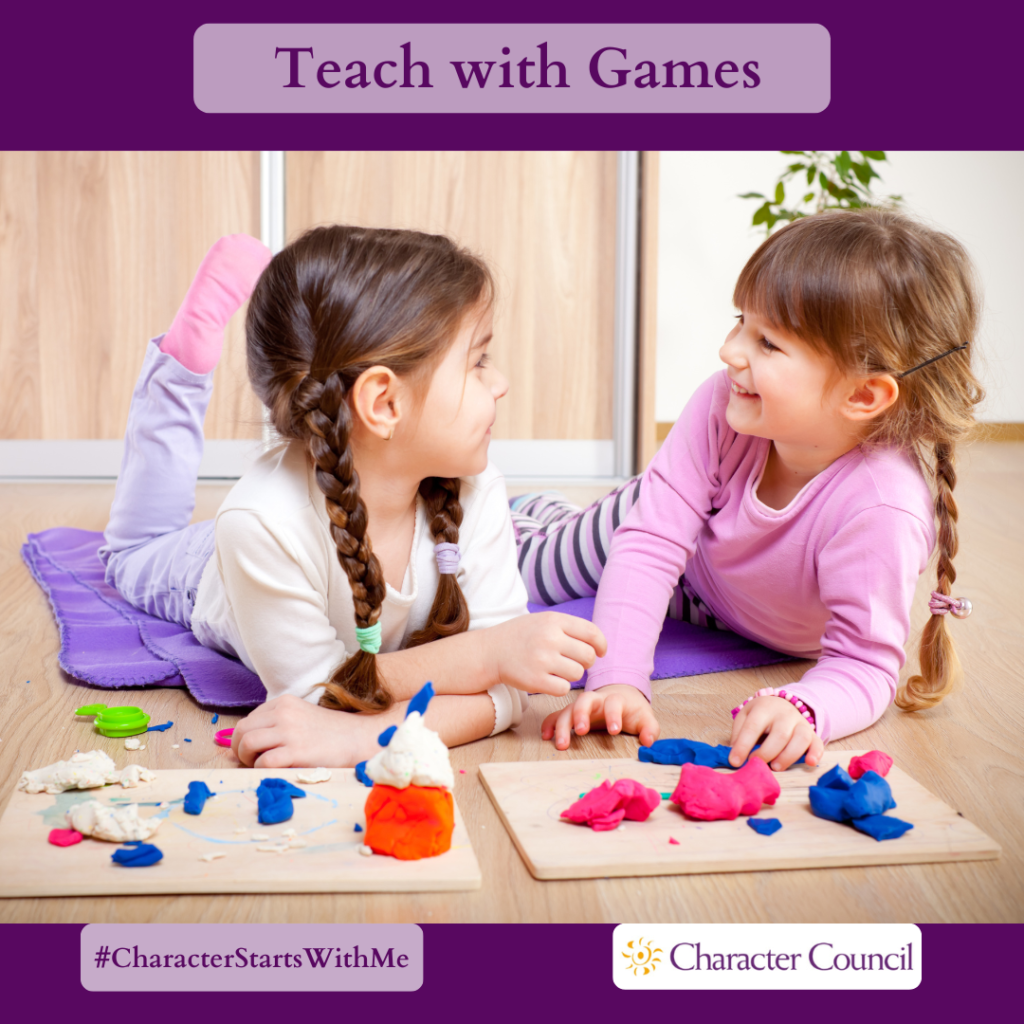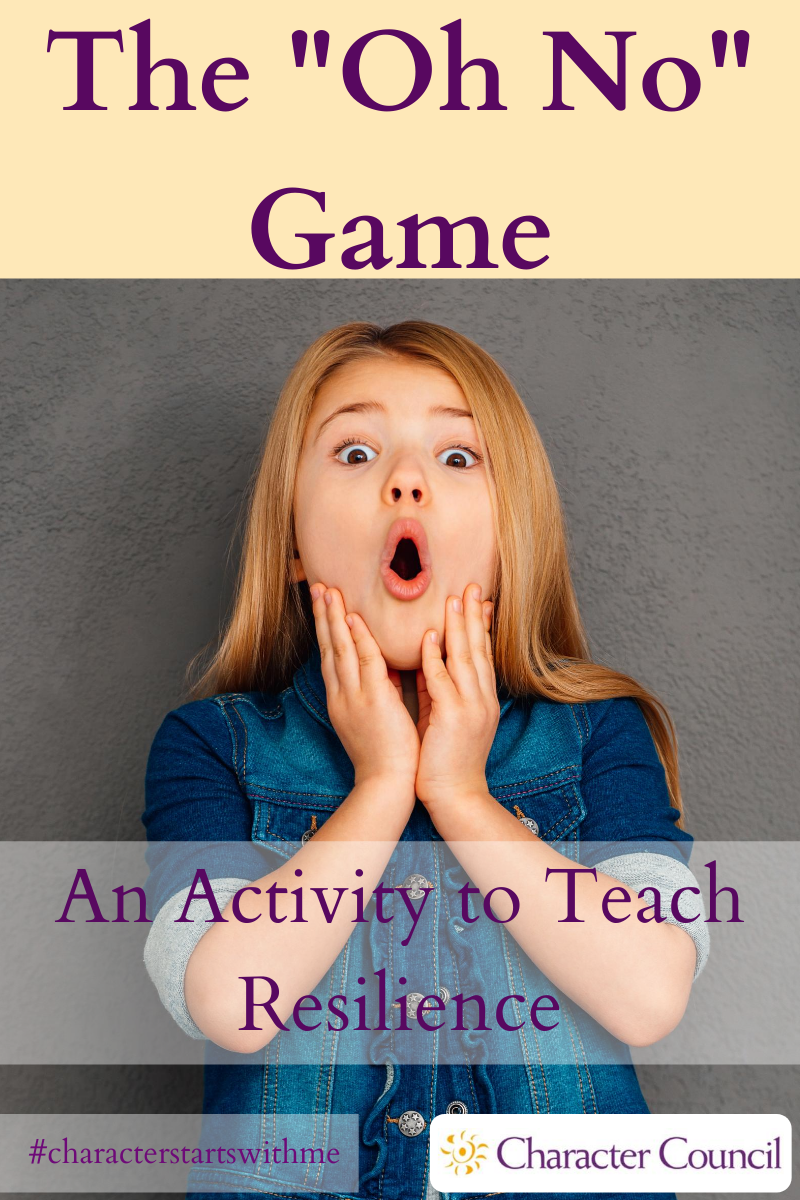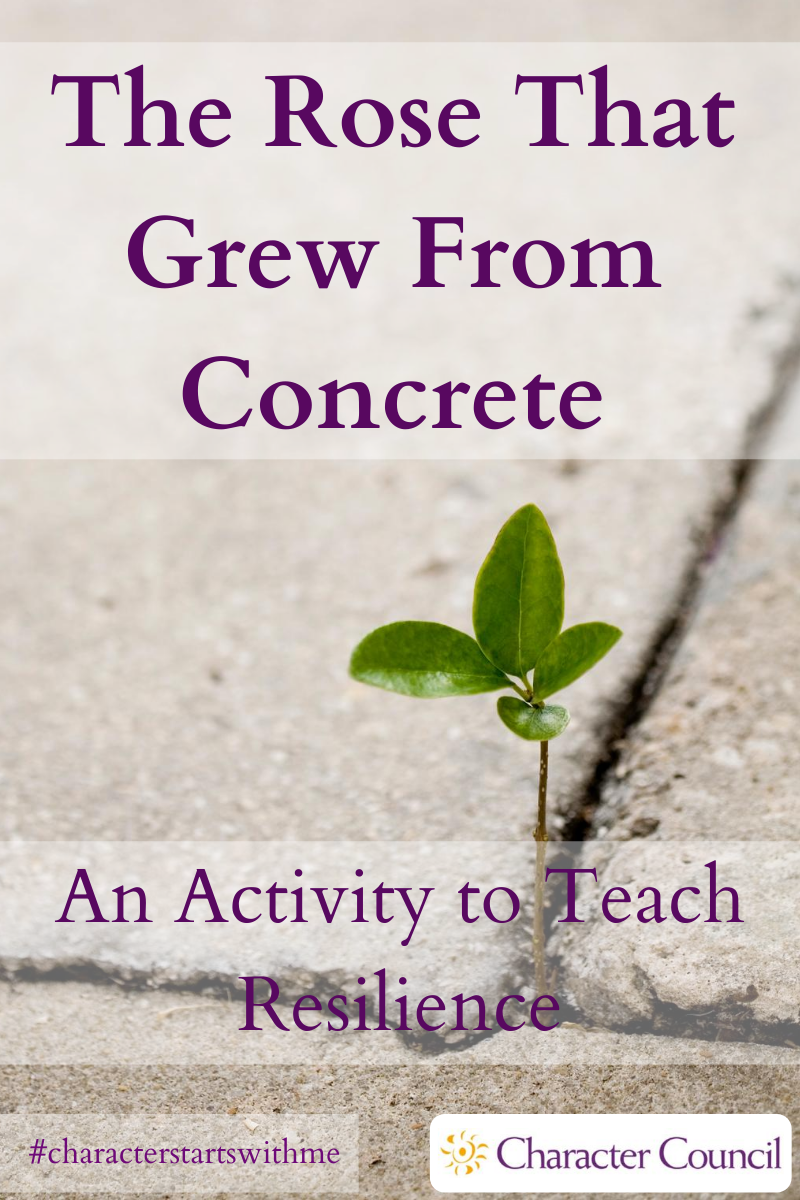
Resilience Activities
The activities here are fun ways to teach character. The game aspect makes the lesson more memorable. Each activity has processing questions at the end. Without processing the activity, the exercise is just a game. To make it a stronger lesson when you process it, relate the character quality to a core value that your organization promotes.
Consider picking a student to run the activity. You will need to give them time ahead of the activity to prepare. Another option is to pick a few students to run the activity for a younger classroom after you have run it for your class. Encourage your students to repeat it in the home for younger siblings or even parents.


Asking for a Friend
It often happens that when we hit troubled times, we react differently than the advice we would give a friend in a similar circumstance. This exercise will hopefully point that out. Ask the class for examples of encouraging things can you say to a friend or family member to help them feel better when they are troubled. Try to align the suggestions as an acronym for BOUNCE to reinforce the visual of bouncing back. If there is another phrase (Shake it off or Let it go) that is more appropriate for your class, feel free to use it. There are good suggestions that do not fit these letters so when you get one of these, write it below the word. Some examples are below. Pick a few to show them some examples. Add any others you like if you hit a lull. After you believe you have exhausted the examples, ask them to quietly think about things they say to themselves in their head when they are struggling with something. Ask them to pick their “go-to” phrase from this list they can use to encourage themselves whenever they have negative self-talk. Download the image of the heart inside a thought bubble and have them write this phrase inside the heart. Older students may be able to draw their own heart-shaped thought bubble. Encourage them to put this somewhere they will see it and remind them to use it.
Examples:
Be strong and try again; Break – take a break if you need, too;
Others have gone thru this too; Open yourself to new possibilities; Optimism – look for things that went right
Understand what went wrong so you can fix it next time; Up your game by finding ways to learn or practice to be better next time
Need friends – ask them for help; New – find something new to do; Not let it affect other areas
Choices – try to think of all the choices you have now; Courage – use your courage to be strong
Every cloud has a silver lining; Empathy – have empathy for others having similar issues
Other Phrase Examples:
Is it really as bad as it seems?
Have hope
Shake it off/Let it go
Talk to adults
You are good at other things.

The “Oh No” Game
Arrange the students in groups of 5 – 7 sitting in a circle. Pick a place in the circle to start. The first person makes up a bad luck scenario and shares it with the group. The scenario starts with “Oh, no!” For example: “Oh, No! The car won’t start”. Everyone in the group tries to make up a good result that could come out of that. This could also be explained as the silver lining. Their responses start with “Oh, well.” for example: “Oh, well, You’ll save money not going to the mall”. The group should try to come up with as many ‘Oh well’s for each ‘Oh no’ as they can. When the groups are finished, ask them to share some of the more humorous answers with the class. When finished, ask the students how easy it was to look for the silver lining. Try to use the Oh no/Oh well language in the classroom when bad luck occurs and try to turn around the situation.
To process the activity, ask these or similar questions:
- Was it hard to make up examples of ‘Oh no’?
- Was it easier or harder to make up examples of the ‘Oh well’s?
- When an “Oh well’ was funny, did it make the Oh no seem less disastrous?
- The next time you run into a real ‘Oh no’ will you think of some ‘Oh well’s?
If this exercise violates your social distancing rules, feel free to let the groups be how they are already sitting or do it as a class.

The Rose That Grew From Concrete by Tupac Shakur
Did you hear about the rose that grew
from a crack in the concrete?
Proving nature’s law is wrong it
learned to walk with out having feet.
Funny it seems, but by keeping its dreams,
it learned to breathe fresh air.
Long live the rose that grew from concrete
when no one else ever cared.
Tupac Shakur was better known by his stage name 2Pac and by his alias Makaveli. He was an American rapper, songwriter, and actor
Read the poem to the class. When finished, process the reading with these or similar questions:
- What pictures come into your mind when you listened to it?
- Could you tell what the poem was about from the name?
- Have you ever seen grass or a dandelion growing in a sidewalk crack? What did that make you think of?
- Have you ever heard the phrase “Bloom where you are planted.”? What do you think that means? Do you think the Rose in the poem did that?
- Do you think you can bloom where you are planted?
- The next time you face difficulty, will you remember the rose in the concrete?
If you are good at rap or have a student who is you may want to do a second reading in rap.